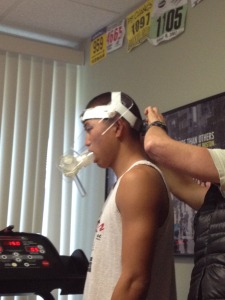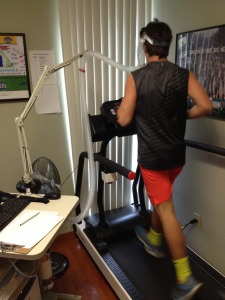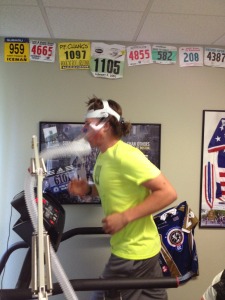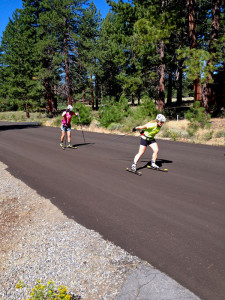Sugar Bowl Academy Attacks VO2 Testing
Sugar Bowl Academy Nordic Head Coach, Martin Benes, offers his thoughts on the importance and value of Vo2 testing his athletes…
A couple of weeks ago we had the opportunity to bring our U18 athletes down to the Silver Sage Sports and Fitness Lab for VO2 max testing. While it was certainly fun get VO2 values for our athletes, there is a lot of feedback from these tests that we can use as coaches.
While VO2 max is trainable, more so at this age, we are really interested in a couple of other pieces. The first is the purely mental challenge of pushing yourself hard on a treadmill indoors. One of the great joys of endurance sports is being outside and having the scenery flash by in a blur. The treadmill clearly takes that away, and with no finish lines in sight, it becomes a mental battle to see how long you can stay on; how much steeper can the treadmill get?
For our purposes what we really like to see is efficiency. What that means from an endurance perspective is how close is an athletes’ anaerobic threshold to their VO2 max? The closer those values are, the more efficient our athletes’ “engines” are, and more importantly a good indicator that they are responding well to the training plan. If not, we need to reevaluate what that athlete might need.
We can also glean data from the test results to determine the proper training zones for individuals. This helps us as coaches because we can individualize training zones and plans in order to pinpoint strengths and areas for improvements. While we always want to improve on our weaknesses, we also need to remind ourselves to maintain our strengths. As competitors, our athletes are often seeking out every opportunity to improve. The VO2 testing showed a path to improvement but also reminded us of our strengths.
Our training is on the right track. We saw that with the efficiency of our athletes’ respective “engines” and also with their mental tenacity. With a few months until our major championship event, we still have time to make those small improvements and get even stronger.





